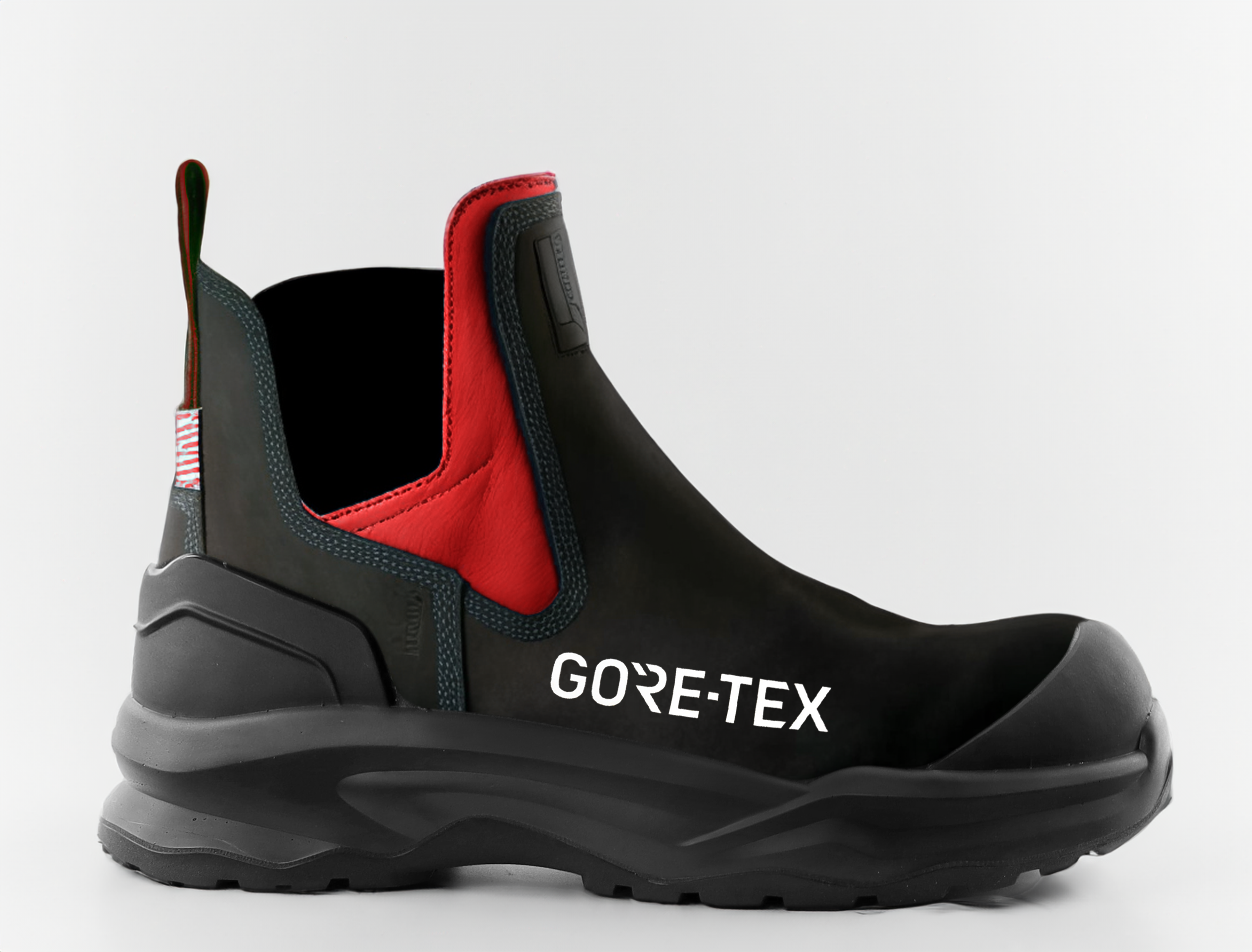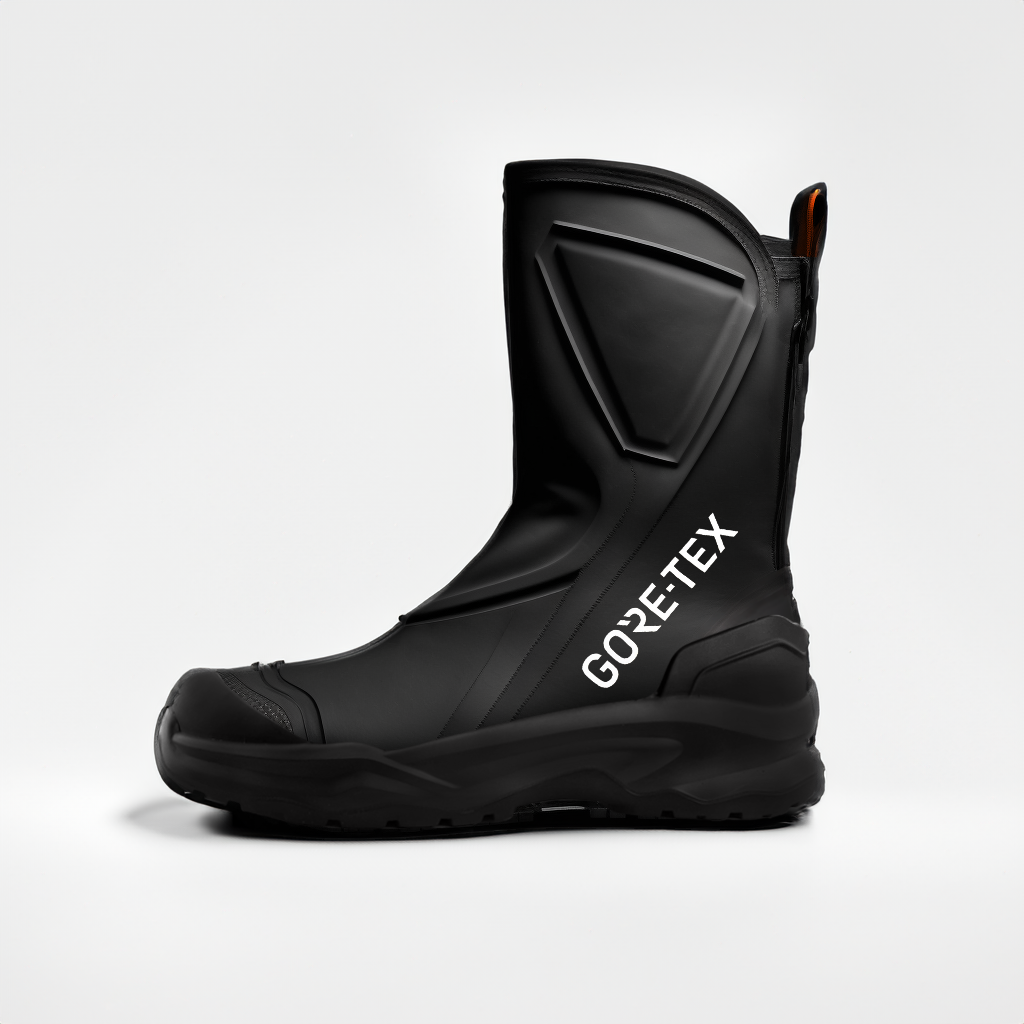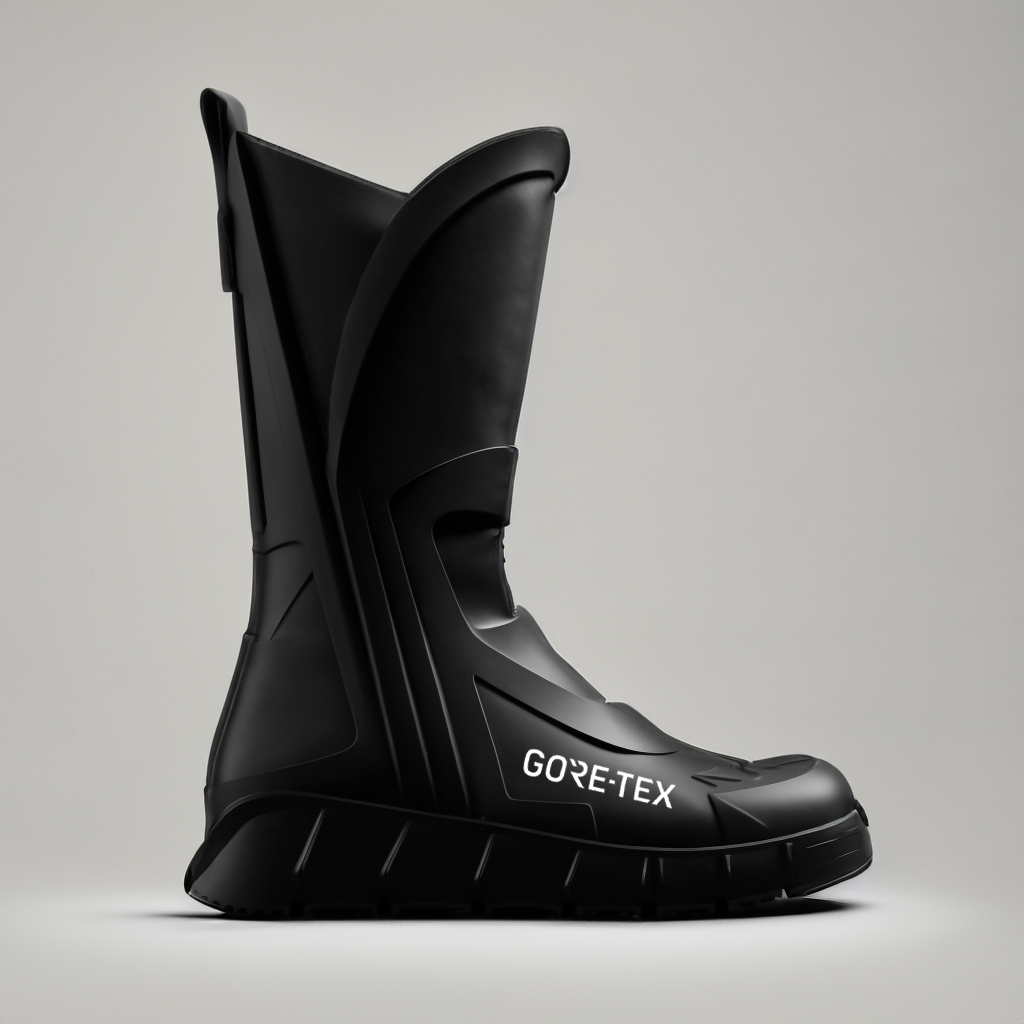AI and EXTRAGUARD
Two hearts beat in my chest: Artificial Intelligence (AI) is dangerous because you can no longer tell if something was really created by a human being or not. But AI also opens up an incredible number of possibilities, expands intellectual horizons and inspires. So which is it: is AI good or evil? My conclusion after talking to Cornelius Waiblinger, CEO at AI Alanis, is: it depends on what you want to do with it, or as my research colleagues would say "it depends". Cornelius, on behalf of GORE-TEX Professional, lined the AI program with the innovative EXTRAGUARD upper technology. This is so revolutionary that it is virtually predestined for AI design proposals. The result is amazing design inspiration.
Cornelius is extremely fascinated by technical things. Already after his studies in media arts he started his own business with experimental design and video installations and since last year he has been working on "AI in design", a completely new way of generating images. "The incredible thing is that you can create a photo-realistic image with a text input. It allows you to do anything in idea creation. You don't have to be a photographer or designer. You can just create 'something' out of 'nothing,'" Cornelius said.
Cornelius then immediately demonstrates live on his laptop how something can be created from nothing. First, he simply enters the keyword "shoe as photo, no drawing" into the AI program, and within 30 seconds four different shoe models appear on the screen. In fact, the models look as if they actually exist, but they do not. This is quite fascinating indeed. "Now, you could further refine one of these models by entering more keywords, such as 'minimalist mid-cut safety shoe.' ' Or you could feed the program a photo and take that as a starting point to refine further on it." The new result is amazing: new, artificially created models immediately appear on the screen again.

First AI project: Upcycling of a worn-out GORE-TEX work jacket
Not so long ago, brainstorming sessions were held with flip charts and felt pens. There is no doubt that the interaction with associates in such a constellation was much more lively and the exchange more direct. However, there were always certain discussion patterns and the 'scissors in the head' of what was 'not possible' or 'just not possible'. "With AI, which is based on simple and general 'prompts', where you get very realistic product and application images, you can visualize ideas quickly. However, whether or not they are actually feasible still requires technical Gore or customer expertise," says Leonhard Schlichting, Business Leader Workwear at GORE-TEX Professional
A few months ago, a customer asked, "what can you make out of an old, retired GORE-TEX work jacket?" That's when the idea came up to have Cornelius test this question using AI. Within no time, the program spit out a few upcycling design elements, which then caused a stir not only internally, but also with the customer.
"In a next step, we confronted the AI program with the question of creating a future-oriented, modern protective clothing with integrated LEDs, and indeed, very interesting design proposals came out," Leonhard continues. "However, it's already clear that you can't implement an AI design that easily; it still requires, for example, cut patterns, lab tests or compliance with industry standards. For us, it's pure inspiration. We don't do design work for our customers and we certainly don't want to take away their design work, but we want to inspire customers, open up new horizons for them and for us."
AI Project with EXTRAGUARD
All these first steps with AI have shown one thing clearly: AI has no design limits and this was then also the start of the project 'AI and EXTRAGUARD'. The innovative EXTRAGUARD upper material incorporated into the very latest GORE-TEX safety footwear is so revolutionary that it is ideal for AI design proposals. "The EXTRAGUARD material offers endless possibilities compared to leather because it can be worked differently," Cornelius said.
Again, Cornelius started with a selection of keywords and then refined individual AI design variants as the AI process progressed. In total, four EXTRAGUARD categories were developed with style variations, all in the safety footwear segment. Chelsea boots, rigger boots, athletic safety shoes and rubber boots - all with EXTRAGUARD material instead of rubber. "You can create a lot of design variations using AI, but if you want to keep the sole in a certain variation, you have to Photoshop that," Cornelius says. "The same goes for the GORE-TEX lettering on the shoe, which I added after the fact." So not everything you want goes.
 From countless images, Gore Associates subsequently made a pre-selection. "We then showed these AI designs to the experienced GORE-TEX Professional shoe masters Rainer Geiger and Helmut Klug. It was very exciting to discuss shoe designs that don't exist with them, precisely because the AI designs were very different from previous, well-known shoe designs. A highlight for me was the feedback 'that's an interesting solution, it could work, we haven't thought of that before and it gave us an idea of how to think about a shoe differently'," Cornelius is pleased to say.
From countless images, Gore Associates subsequently made a pre-selection. "We then showed these AI designs to the experienced GORE-TEX Professional shoe masters Rainer Geiger and Helmut Klug. It was very exciting to discuss shoe designs that don't exist with them, precisely because the AI designs were very different from previous, well-known shoe designs. A highlight for me was the feedback 'that's an interesting solution, it could work, we haven't thought of that before and it gave us an idea of how to think about a shoe differently'," Cornelius is pleased to say.
AI Designs: Opportunity and Risk
 From the customer side, there is very great interest in what AI designs of safety footwear look like. However, there are - rightly, in my opinion - also great fears. Designers in particular take a critical view of this development. "We have also received critical voices in the past with design proposals without AI influence. In general, however, the positive aspects of the proposals have inspired and have also been implemented in part by various customers. Our goal now was to generate AI designs and imagery to initiate discussions for new GORE-TEX EXTRAGUARD styles, and I'm looking forward to seeing what the reactions will be this time," explains David Bastias, responsible for strategic marketing footwear at GORE-TEX Professional.
From the customer side, there is very great interest in what AI designs of safety footwear look like. However, there are - rightly, in my opinion - also great fears. Designers in particular take a critical view of this development. "We have also received critical voices in the past with design proposals without AI influence. In general, however, the positive aspects of the proposals have inspired and have also been implemented in part by various customers. Our goal now was to generate AI designs and imagery to initiate discussions for new GORE-TEX EXTRAGUARD styles, and I'm looking forward to seeing what the reactions will be this time," explains David Bastias, responsible for strategic marketing footwear at GORE-TEX Professional.
Cornelius also sees light and shade in the use of AI. "Anything creative is first a big threat to designers and artists because you can just visualize new ideas. Deep fakes are a danger because you can hardly distinguish what is original or not. That's a huge problem. The AI idea makes use of infinite resources that far surpass the human brain. But I myself see AI design as a great help to show completely new ways and to overcome existing patterns. From my point of view, the opportunities and possibilities to visualize ideas outweigh the risks in this project," says Cornelius.



